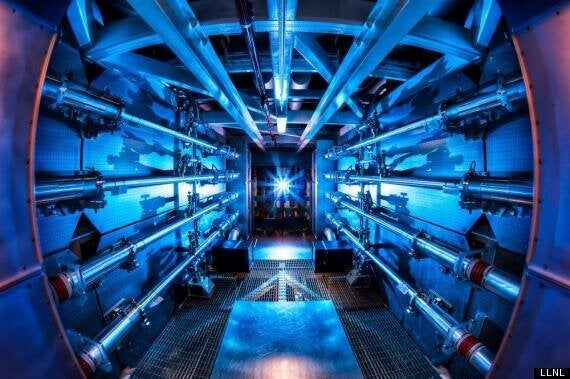The dream of a practical, useful and cost-effective nuclear fusion reactor is not quite as fanciful as Back To The Future made it seem.
Scientists are increasingly convinced that the revolutionary form of power is getting closer to becoming a reality.
A new study from one of the world's pre-eminent fusion research centres says that a self-sustained fusion reactor - what is, in effect, a miniature star in a box - is within our reach.
Researchers at the American National Ignition Facility (NIF) have published a survey report in the journal Physics of Plasmas which explains the progress made since 2010.
While admitting that at least one massive obstacle remains in place, they say that sustainable nuclear fusion is now conceivable.
Unlike nuclear fission, in which atoms release vast amounts of energy when they are broken apart or decay, nuclear fusion involves the fusing together of atomic nuclei. When combined at very high speeds, light elements release vast amounts of energy. At the point of ignition, in a fusion reaction, more energy is generated than is needed to sustain it. It is this process that enables our Sun to burn for billions of years, fuelled mainly by hydrogen.
And for obvious reasons the potential for civil power generation is huge, not least because the elements it uses are abundant (unlike nuclear fuel) and the waste product would be far less damaging to the environment.
While scientists have worked for decades on producing self-sustaining fusion reactions in the lab, they've so far come up short. Though that's not to say they haven't made progress, as the NIF report makes clear.

Above: the NIF's 1.8 megajoules of energy and 500 terawatts of power laser experiment
In one experiment, the NIF has been able to ignite a fusion reaction by focusing 192 laser beams, delivering 1.8 megajoules of energy and 500 terawatts of power (or more than the US uses at any single moment) in billionth-of-a-second pulses inside a hollow chamber the size of a pack of gum.
Within that chamber is a ball-bearing containing two hydrogen isolations, which implodes at temperatures and pressures comparable to those found in our sun. Which all sounds great. But there's a snag:
"In our new review article, we report that the NIF has met many of the requirements believed necessary to achieve ignition--sufficient X-ray intensity in the hohlraum, accurate energy delivery to the target and desired levels of compression--but that at least one major hurdle remains to be overcome, the premature breaking apart of the capsule," said John Edwards, NIF associate director.
"In some ignition tests, we measured the scattering of neutrons released and found different strength signals at different spots around the D-T capsule. This indicates that the shell's surface is not uniformly smooth and that in some places, it's thinner and weaker than in others. In other tests, the spectrum of X-rays emitted indicated that the D-T fuel and capsule were mixing too much--the results of hydrodynamic instability--and that can quench the ignition process."
Look. It's complex stuff, clearly.
But the crux is that while the fusion reaction is possible, it's just not currently sustainable.
However, Edwards and the team remain convinced that future advances are possible, and that with a lot more work we might one day have a cheap and maybe revolutionary solution to our energy problems.